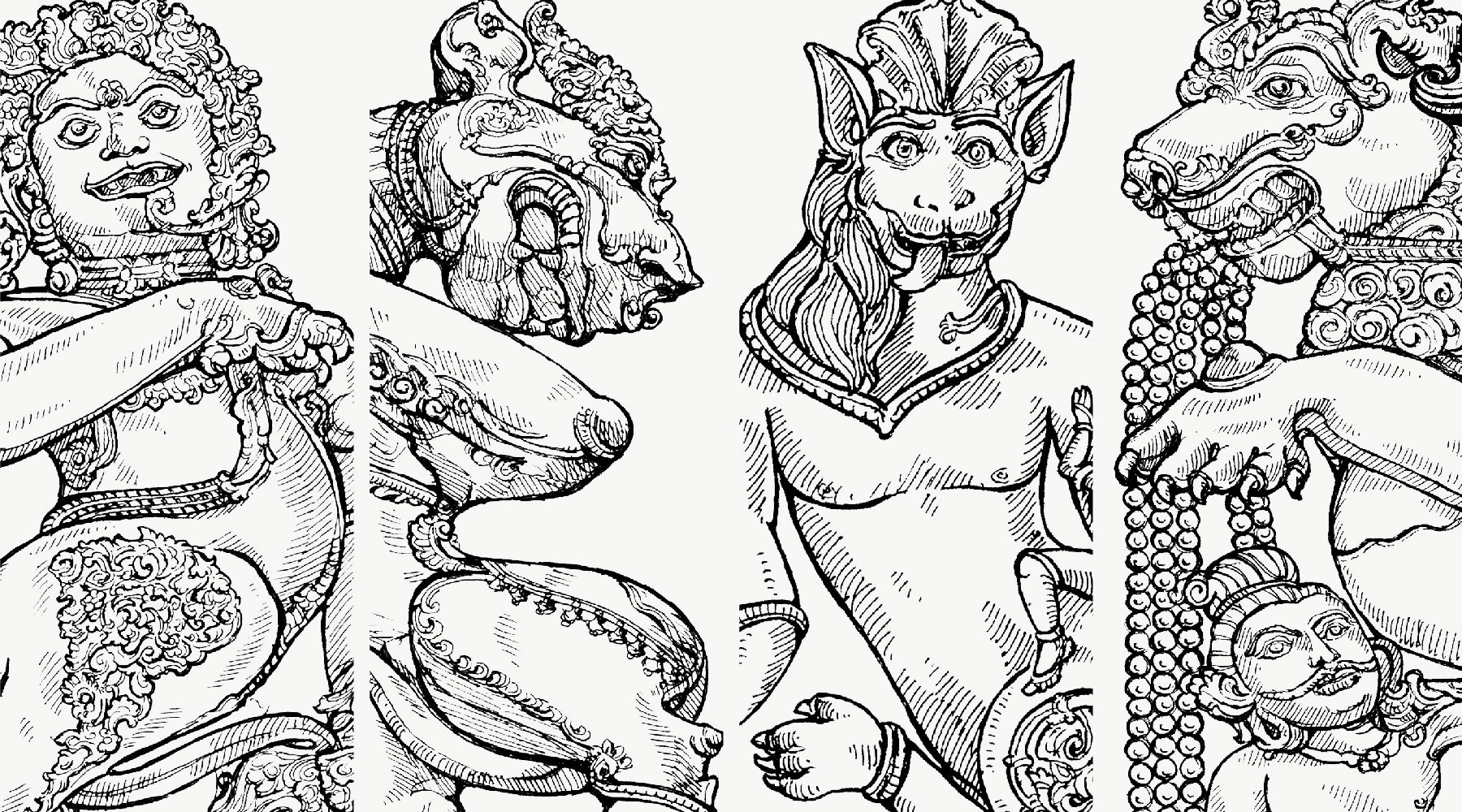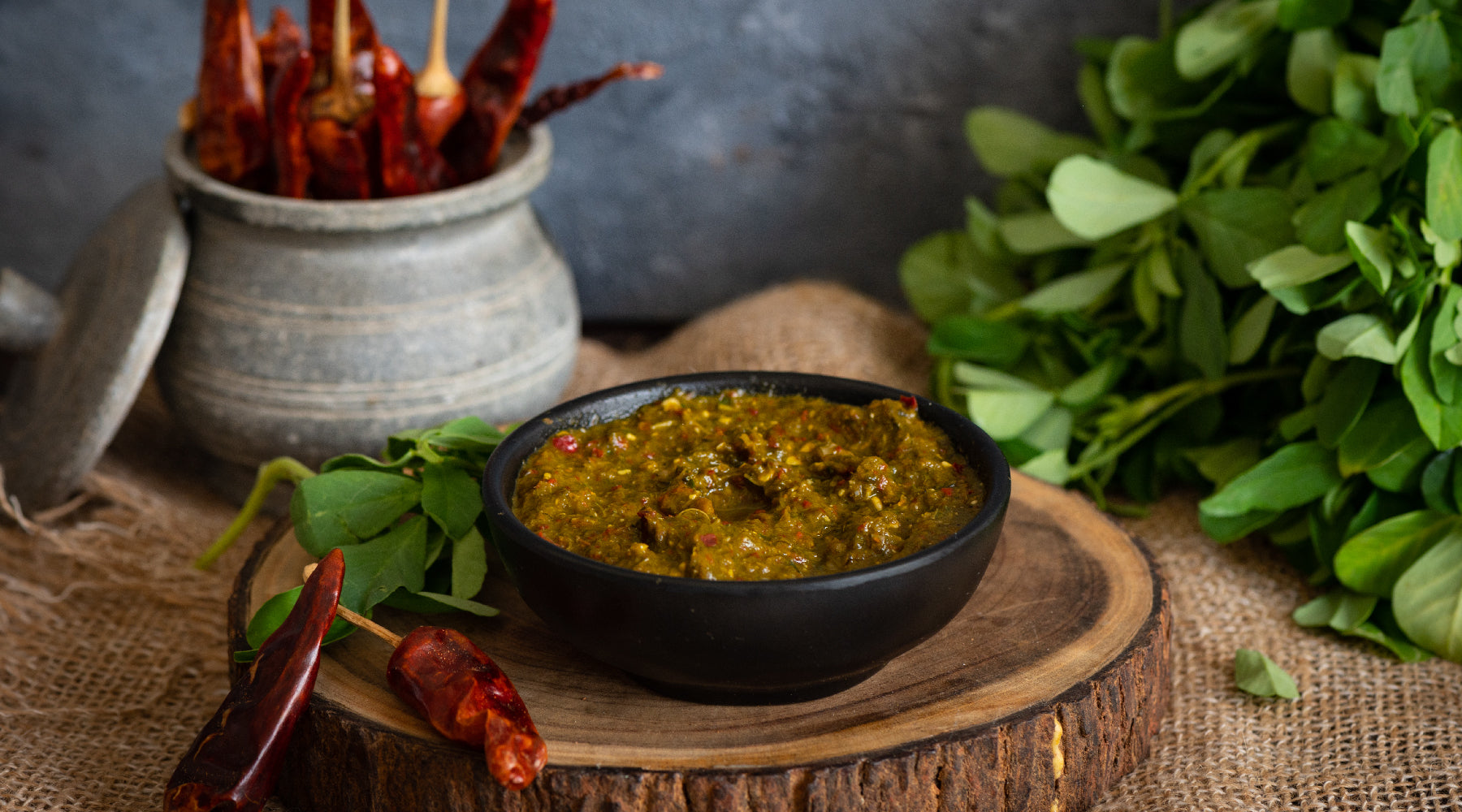Varna Sutra : Healing Foods (Part 1)

Unfolding in a beautiful lexicon, the kanjivaram’s colours are rich in local flavour, indigenous and evocative. They are rooted in culture and the natural world, and include references to ingredients found in a South Indian kitchen—from the golden orange of kesari (saffron), to the delicious, deep yellow of mambazham (mango), and the orange tinted red of thakkali (tomato).
This season of change, many of us are returning to the kitchen. We’re also returning to the wisdom of our grandmothers and their traditional homemade remedies that boost immunity.
Over the next two weeks, Kanakavalli draws inspiration from the kanjivaram’s rich and varied colour origins to pick local ingredients and bring you simple recipes for good health—another reminder of how infused our local culture and nature are in craft. Rooted in Ayurvedic traditions, these remedies draw on the healing and medicinal properties of many elements found in the kitchen, their distinctive hues a part of the kanjivaram craft’s traditional palette.
To capture these ingredients visually, we invited Nandi Shah, food stylist, photographer and blogger, to create images in her signature style. Working during the national lockdown, she has infused our project with warmth and beauty and we hope you enjoy these!
As the world grapples with the unprecedented impact of the pandemic, the best thing we can do to stay strong and healthy is to rediscover the simplicity of India’s healing foods. We hope you try these remedies at home, for yourselves and your families, and that they help you find balance, well-being and good health during these trying times.
To accompany these recipes, we have curated a selection of exquisite kanjivaram silk saris that bring to life the colours of each ingredient.
BHAISAJYAM
THE MAGIC OF MANGOES (MAMBAZHAM)

Mambazham or mango yellow is a kanjivaram classic. The gorgeous deep yellow hue is a delight on the lush silk sari. The king of fruits and its tree are also sacred in the context of the Sthala Vruksham or the temple tree of Kanchipuram’s Ekambareshwara temple. Under this tree, Lord Shiva and Parvathi get married every year in a significant festival of the region.
Mambazham or mango yellow is a kanjivaram classic. The gorgeous deep yellow hue is a delight on the lush silk sari. The king of fruits and its tree are also sacred in the context of the Sthala Vruksham or the temple tree of Kanchipuram’s Ekambareshwara temple. Under this tree, Lord Shiva and Parvathi get married every year in a significant festival of the region.The mangai motif and mambazha yellow are both ubiquitous to the craft. The beloved summer fruit is high in fibre and good for digestion.
Recipe : Fresh Mango Chutney
Make a delicious fresh mango chutney by blending together the flesh of one mango, 1/2 a teaspoon of dry roasted mustard seeds, a 1-inch piece of ginger, 2 pinches of cinnamon powder, 2 teaspoons of sugar, 1/2 a teaspoon of lemon juice, and salt to taste. This traditional fruit chutney is good for digestion.
THE MIRACLE OF MANGO LEAVES (MANTHULIR)

In the kanjivaram tradition, the lexicon of colours is rich in local flavour and specific detail. Manthulir is a colour that refers to the delicate green-red hue of tender mango leaves that symbolise the onset of summer. On the sari, this colour showcases the intricate and skilled interplay of warp and weft, through a unique shade of green shot through with crimson for a richly layered, two-toned effect. Manthulir evokes nostalgia for childhood summers spent climbing favourite trees. Fresh mango leaves and tender young mango leaves can be used for relief from a sore throat, and to manage diabetes.
Recipe : Manthulir Elixir
- Boil a few mango leaves in a cup of water until it reduces by half. Add four spoons of honey and a dash of pepper. Drink half this liquid as soon as you wake up, and the other half an hour before dinner for relief from a sore throat.
Also,
- To manage diabetes, make a paste of manthulir (tender mango leaves) and mix a tablespoon of this with half a glass of curd or buffalo’s milk. Drink this mixture twice a day.
SAFFRON FOR SLEEP (KESARI)

Saffron, the world’s most expensive spice that is loved for its delicate flavour and aroma, is a lustrous golden orange hue on the kanjivaram drape. The colour of fire—that also appears on the Indian flag—has deeply rooted sacred and spiritual connotations of purity and sacrifice. It comes to life in rich and vibrant beauty on the silk. Kesari, as it is called, also refers to a popular South Indian sweet, ‘rava kesari’. For a night of peaceful sleep free from worry and to treat headaches, try these simple saffron remedies.
Recipe : Saffron Destressers
- Using a grinding stone, make a paste with a few strands of saffron, a piece of turmeric and a little water. Apply on the forehead at bedtime for a restful night.
- For headaches, add a few strands of saffron and a quarter teaspoon of dried ginger to a small pot of water. Heat until lukewarm, and apply to your forehead.
ROSES FOR RELIEF (PANEER ROJA)

The delicious baby pink of paneer roja or the scented pink rose of South India is a gentle shade on the sumptuous silk of the kanjivaram. The petals of this beautiful and beloved flower are used to make rose water and food flavourings, while the colour symbolises love and femininity. Considered auspicious, these pink roses are woven into garlands for wedding and engagement ceremonies, while its petals are often sprinkled in blessing. This simple and fragrant rose essence has healing properties and helps treat several ailments.
Recipe: Rosewater Essence
Add the petals of 25 pink paneer roses to five cups of boiling water. Turn down the heat and simmer until it reduces by a cup. Filter the essence, and add a little honey for sweetness. Dilute this liquid and drink regularly to control irritation in the eyes. This healing potion also relieves a dry throat, and regulates digestion and breathlessness.
FENUGREEK TO FLOURISH (VENTHAYAM)

Fenugreek seeds or vendhayam are an important element in the South Indian kitchen, used in traditional sambar and other recipes as well as in medicinal cures. The ingredient is transported to the kanjivaram drape as a delightful two-toned shade of yellow shot with mustard brown. Set against contrast and complementary hues, and embellished with zari and silken yarn, the colour has become a kanjivaram favourite. Shades of yellow are also tied to sacred meaning and rituals. Among its many medicinal properties, fenugreek relieves body heat and constipation.
Recipe: Fenugreek Healers
- Soak a teaspoon of vendhayam or fenugreek seeds overnight in a glass of buttermilk. Drink it the following morning to ease heat from the body.
Also,
- Roast two teaspoons of vendhayam, pound to a fine powder, and eat mixed with honey as a quick cure for constipation.
TRUST IN THE TOMATO (THAKKALI)

A stunning shade of red with hints of orange, thakkali is the colour of fresh, ripe tomatoes. Ubiquitous in South Indian cooking, the tomato finds its way into several recipes. The tomato red kanjivaram, gently tinged with orange, is a timeless classic, often featuring in a bride’s trousseau or picked for festive and special occasions. Red is the colour of passion and of life, and the kanjivaram does justice to this fiery hue. Tomatoes are excellent for the skin
Recipe: Thakkali Smoothie
Add equal parts tomato juice, cucumber juice and orange juice, and drink for healthy, glowing skin.
That brings us to the end of Part 1 of our two part article - do let us know if you try any of these and join us in Part 2 for more Healing Foods and kanjivaram colours!
Don't miss the accompanying curation of Kanakavalli kanjivarams that draws on this lexicon of colours - click here to view.
Credits:
Food styling, props and photography - Nandi Shah
Recipes and reference - Kalamkriya
About the photographer: Nandi Shah studied fine art and has always been intrigued by art and design. She picked up the camera recently for her blog, that brings together her Gujarati heritage and her Tamil Nadu upbringing with her love for food—fine ingredients, unique flavours and healthy recipes. A passionate self-taught photographer, Nandi loves to experiment with creative angles, colour and lighting. Drawing inspiration from the Dutch masters, her exquisitely styled still life images have a painterly quality, set against bare, dark backdrops. Nandi’s work was recently showcased at the India Design ID show in New Delhi.



